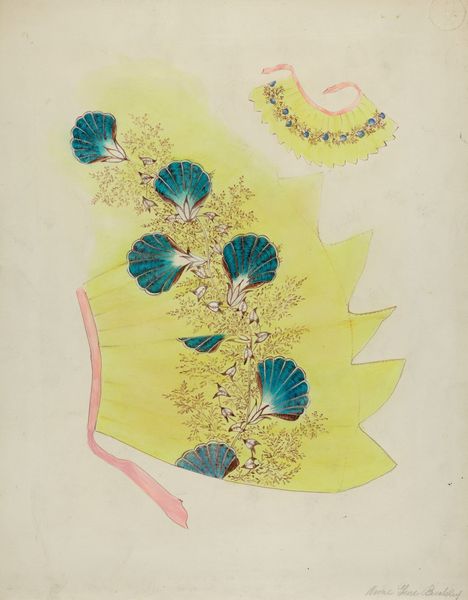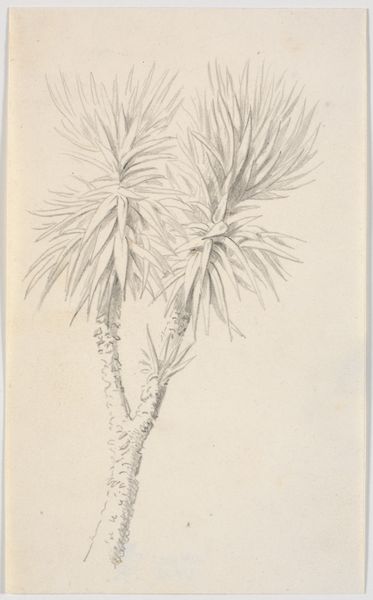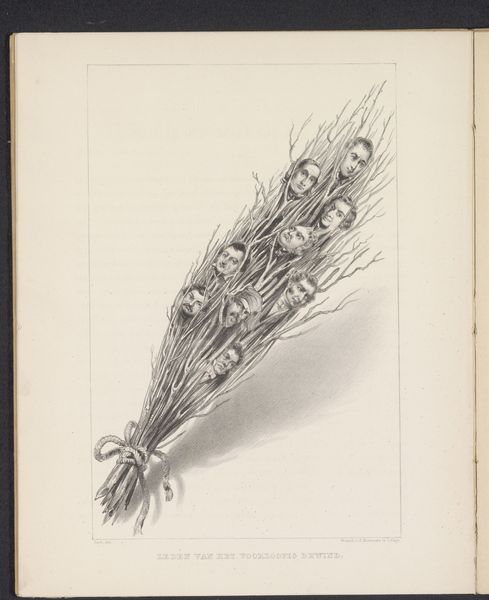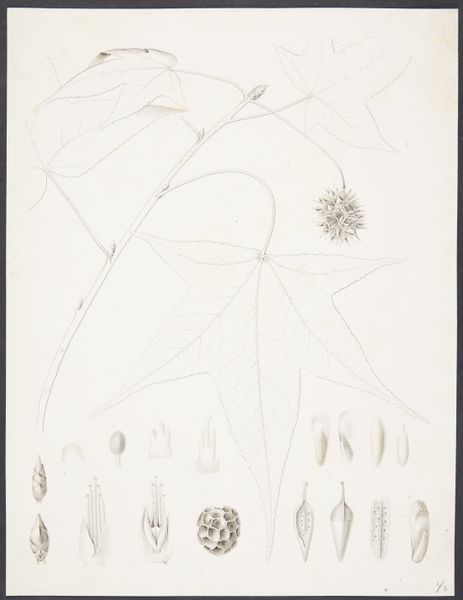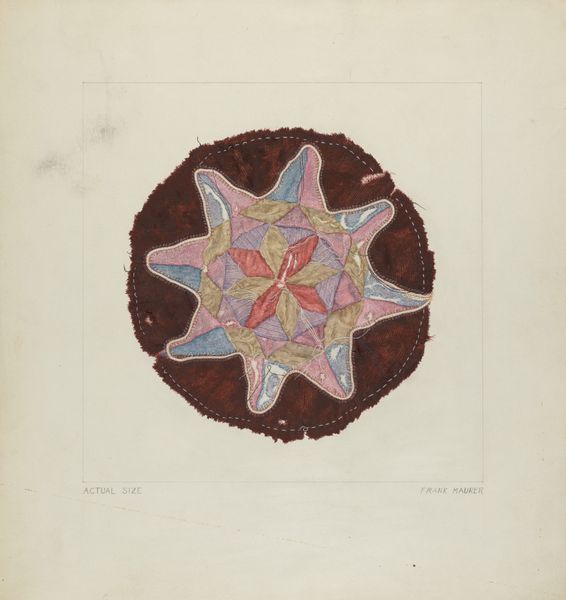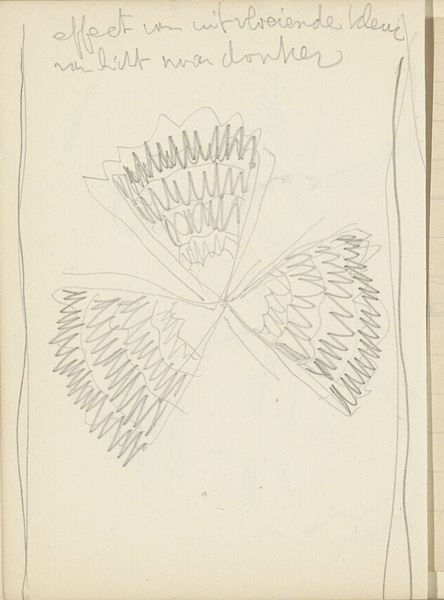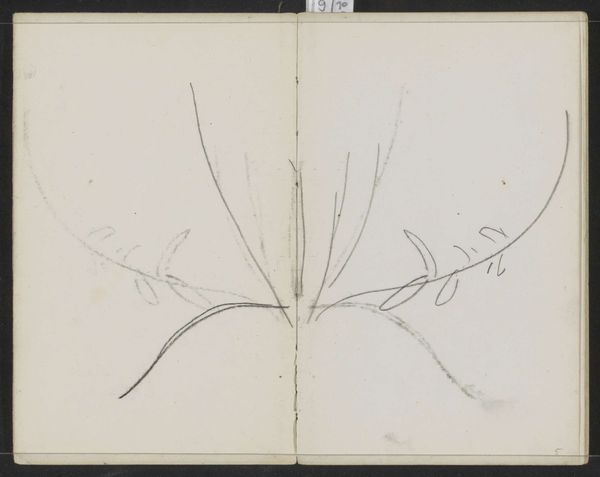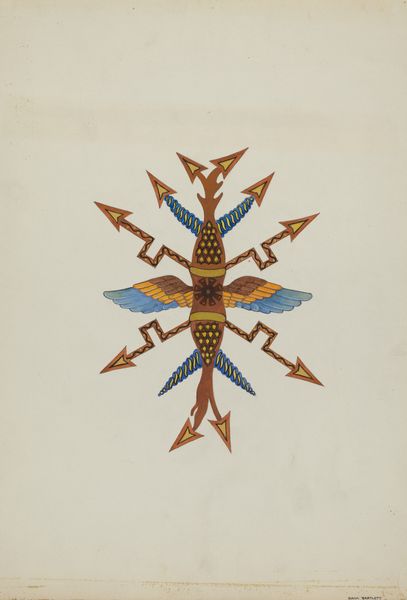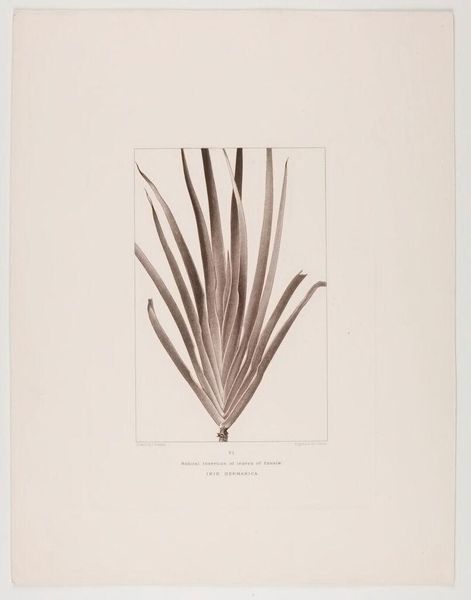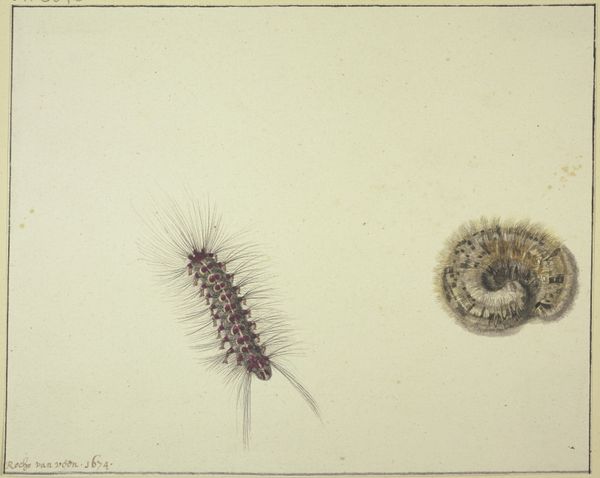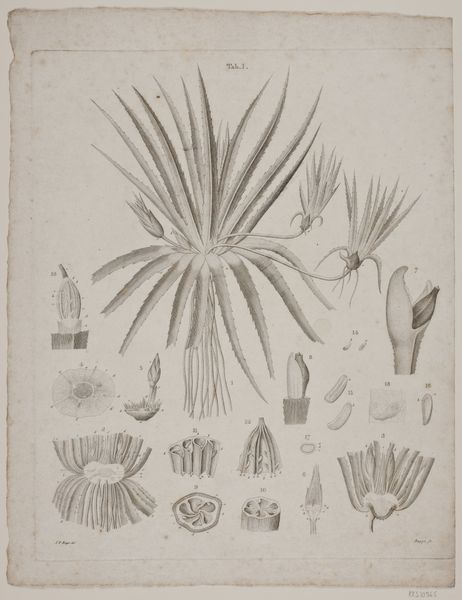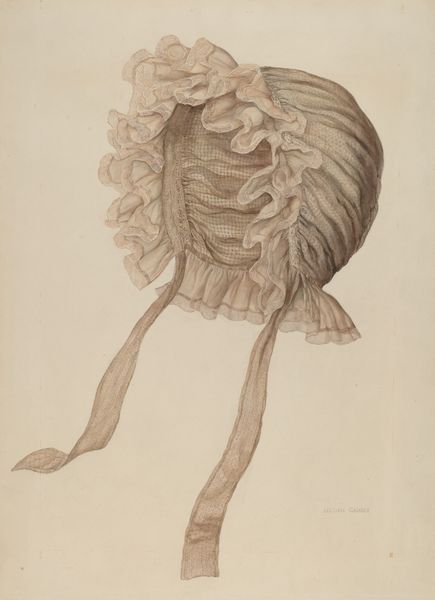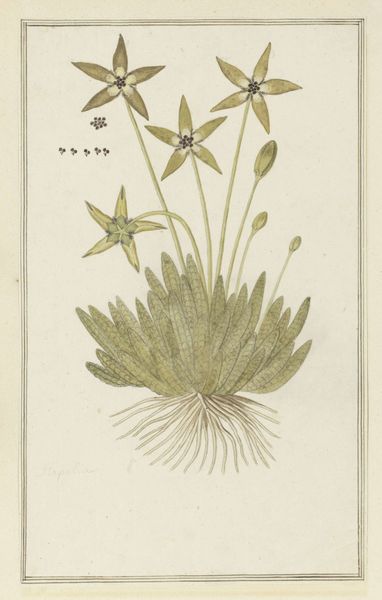
drawing, watercolor
#
drawing
#
watercolor
#
abstraction
#
watercolor
Dimensions: overall: 35.6 x 26.7 cm (14 x 10 1/2 in.) Original IAD Object: 46"high; 64" wide
Copyright: National Gallery of Art: CC0 1.0
Curator: Looking at Cornelius Christoffels' 1940 watercolor drawing, "Aurora, from Behind Saint," I’m struck by its strange blend of the sacred and the… well, unsettling. What are your first impressions? Editor: It feels both radiant and constrained. The emanating rays of yellow watercolor suggest energy and perhaps even joy, yet the overall effect is somewhat rigid and contained within that central oval form. There’s a definite tension. Curator: That tension resonates for me. Christoffels, known for his involvement in various spiritualist movements, seems to be grappling with notions of illumination, not in a purely celebratory way, but perhaps highlighting the complexities and potential restrictions inherent in spiritual seeking. Editor: I see that. The central oval, rendered in reds, pinks, and greys, gives the effect of a hidden or obscured entity, almost biological, with those rigidly ordered, emanating forms juxtaposing this central space. Curator: Absolutely. Think about the social and political climate of 1940—Europe on the brink of immense trauma, the rise of authoritarian regimes, and a corresponding rise in esoteric and spiritual movements. Could this aurora be read as a fragile beacon, struggling to pierce the darkness? Editor: One might also consider the specific use of watercolor. Its translucence creates a sense of ethereal fragility. Note the almost clinical quality of the application within that central zone. It adds to the restrained and conflicted mood you mentioned earlier. Curator: The abstraction invites a broader conversation around the search for meaning and guidance in turbulent times. Perhaps this search, whether spiritual, political, or personal, inevitably entails grappling with complex internal contradictions. Editor: Yes, this visual tension captures the conflicting emotions present during the era while using the properties of watercolor. This piece shows that formal techniques, especially through abstraction, often contain complex emotional or symbolic content that reflects the anxieties and needs of particular historical contexts. Curator: It is interesting to consider abstraction as its own symbolic form of speaking the unspeakable when considering the cultural period of this work. Editor: Well, my understanding of the historical contexts allows me a greater appreciation for how skillfully crafted, the visual elements communicate those struggles. Thank you.
Comments
No comments
Be the first to comment and join the conversation on the ultimate creative platform.
